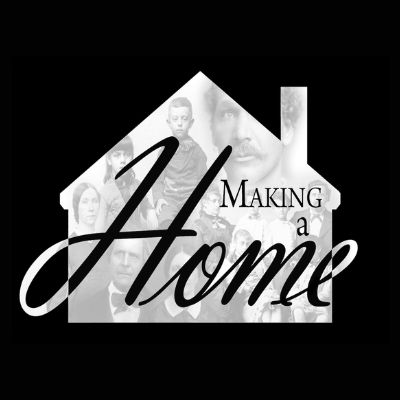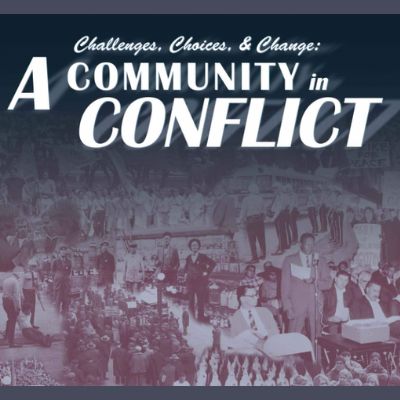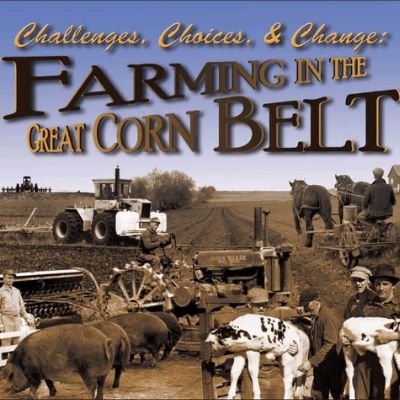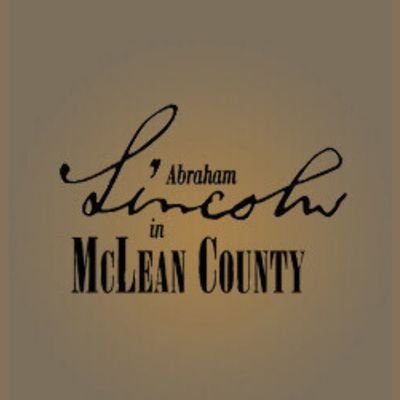Native Groups – The Kickapoo
You can also learn about Kickapoo history in this video with Lester Randall, Tribal Chairman, and Johanna Thomas, Vice Chairwoman of the Kickapoo Tribe in Kansas, as they share Kickapoo traditions, foods, language, historical trauma, assimilation, treaties, and more.
Seven hundred years ago the Mississippian culture faded. The descendants of the Mississippians and other prehistoric people, known as the Woodland groups, were the Native people that Europeans first encountered here. One group, called the Illiniwek by the French, inhabited this area in the 1600s. After contact with Europeans, many Natives died from European disease. Many moved farther west.
European colonization caused great struggles in the eastern United States. Native groups fought Europeans and each other. As a result of these conflicts, the Kickapoo were forced to migrate from eastern Michigan.
They arrived in McLean County as early as 1735. The Kickapoo were the people white settlers first encountered when they arrived here.

This map shows the migration of the Kickapoo.
Pressed by the Iroquois and other tribes from the east and north, the Kickapoo left their ancestral lands for southwestern Wisconsin.
Now pressed by the Sioux from the west, the Kickapoo moved into Illinois and western Indiana. The “Vermilion Band” occupied land in eastern Illinois and Indiana. The “Prairie Band” of the Kickapoo lived in the region of Central Illinois running from the headwaters of the Sangamon River westward to Lake Peoria.

The Kickapoo located here because they needed both the tall grass prairie and the timbered groves to survive. They farmed during summer months using tools made from stone, wood, shell, bone, antler, and sinew. But trade goods from Europe soon replaced these traditional tools.
Skilled bow and arrow hunters, the Kickapoo hunted deer and small game during the winter months. They also used spears for hunting.
Bows were fashioned from wood and sinew (animal tendon). Arrowheads were made from flint, bone, or antler and secured with sinew to a stick trimmed with feathers for control and precision.
They also gathered fruit, nuts, grains, and berries, and tapped the maple trees for sap, which they boiled to make maple syrup.
Like the Mississippians and many other Native groups, they grew three crops called the “three sisters” – corn (their primary grain), squash, and beans that they planted together in equally spaced mounds.
As the corn grew, the beans attached to the cornstalk for support, while the large leaves of the squash plant shaded out weeds. Corn was dried and stored. Later it would be ground into meal and made into corn dishes.
About two hundred years ago the Kickapoo built a large settlement, the Grand Village of the Kickapoo, in what is now eastern McLean County.
The settlement was located northeast of LeRoy on the eastern edge of a wooded grove (later know as Old Town Timber). About half a mile east was a stockade (animal pen and defensive enclosure) constructed of heavy upright logs interwoven with saplings. From their village, the Kickapoo conducted raids on white settlements to the southeast, near the Ohio River.
At the time the stockade was built, the Kickapoo were already trading with French and English hunters and using European trade goods.
The Kickapoo built homes, called wigwams, from sapling trees and bark.
While most Kickapoo eventually abandoned the practice of making wigwams, some Kickapoo continue the tradtion today.
When the Kickapoo were removed from Illinois they went to reservations in Kansas, Oklahoma, Texas, and Mexico. Descendants of the Illinois Kickapoo still live in these places.

In 1905, Andrew Magozee, a descendant of the Illinois Prairie Kickapoo, built this wigwam on the Kickapoo reservation in Kansas. You can see a reproduction partial wigwam in our exhibit here.

The typical Kickapoo home featured a central hearth (fire pit). The hole in the roof allowed smoke to escape. Around the perimeter were raised platforms for sleeping. Cooking utensils, hunting tools, and personal items were stored beneath these platforms.
The Kickapoo, in keeping with all Tribal Nations, did not have a written language. Instead they had oral traditions passed down from generation to generation.
The Kickapoo language is very similar to the Fox Meskwaki (Fox) and Sauk languages of Northwestern Illinois —both also of Algonquin origin. Being a tone language, the pitch of a vowel can change a word’s meaning. Because of this, Kickapoo can sound very musical when it is spoken.
“Kickapoo” or “Kiikaapoi” means wanderer.
When they moved to Illinois, the Kickapoo had already begun to set aside some of their traditional ways. European influences were to blame.
The Kickapoo openly traded for and used European goods. In doing so they changed their way of life.
Archaeology conducted at the Grand Village site provided evidence of the Kickapoo’s use of trade goods, including copper kettles, gun fragments, glass beads, lead bullets, and brass, iron, and silver artifacts.
The spiritual beliefs of the Kickapoo are thought to be based on the idea that natural objects have souls, but little is known about their religious practices.
Beginning about 1816, a famous Kickapoo Prophet, Kannekuk, instructed followers in a new religion combining the ancient Kickapoo ceremonies with Christian symbolism and ideas. Kannekuk’s followers, who came to be known as the Praying Kickapoo, espoused temperance and peaceful coexistance with their neighbors.
The Praying Kickapoo used sticks with engraved symbols, like this reproduction, for prayers. The symbols held meaning for the user, but those meanings were never shared. They were used much like a catholic rosary — as guides for their prayers.
Kannekuk is still a very controversial figure within the tribe today. Today this religion is only practiced by some of the Kansas Kickapoo.
The Kickapoo abandoned many traditional clothing practices when they began to use Euro-American trading networks.
They adopted manufactured items because they greatly reduced the labor needed to make clothing.
Woven fabrics simplified the production of clothing by eliminating the long process of tanning leather.
The Kickapoo acquired metal tools, like these found at the Grand Village, through trade with Euro-American traders or as peace offerings. The use of these items made life easier, but resulted in the loss of traditional pottery skills.
Kickapoo Today
Today the Kickapoo live in Kansas, Oklahoma, Texas, and Mexico. The Kickapoo Tribe in Kansas consists of over 1,600 enrolled members, with approximately 400 living on the reservation. The Tribe engages in enterprises such as farming, casino management, environmental protection, and education to support the health and wellbeing of its people. Kickapoo families together enjoy hunting and fishing, sports and recreation, harvesting and foraging, and the annual Kickapoo Pow Wow. The Kickapoo are a resilient, proud community, descended from ancestors who fought to keep the community alive and thriving
 Making a Home
Making a Home
 A Community in Conflict
A Community in Conflict
 Working for a Living
Working for a Living
 Farming in the Great Corn Belt
Farming in the Great Corn Belt
 Abraham Lincoln in McLean County
Abraham Lincoln in McLean County



















